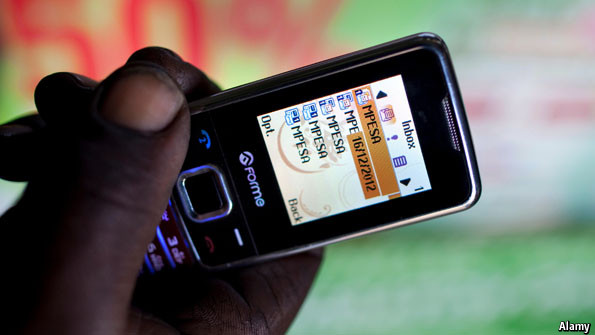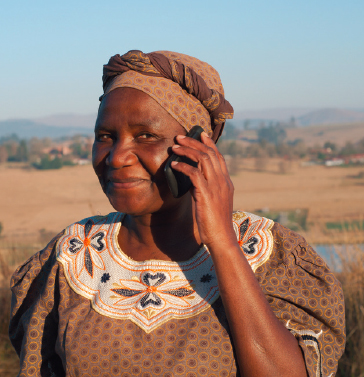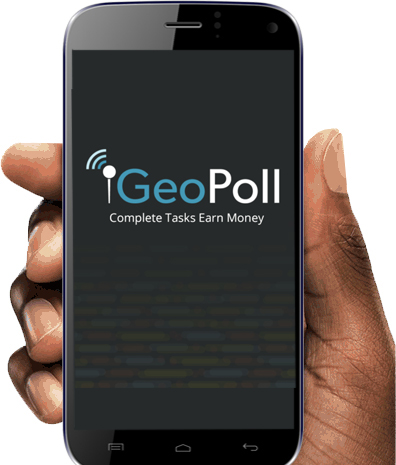Modern technology has opened up opportunities for collecting survey data throughout the world. Today, there is an assortment of available modes for survey-based market research and this article will explain the main modes of research that perform highly in emerging markets. While reading, keep in mind that every project is different depending on the market and project goals. For a specific quote, contact a GeoPoll representative.
Computer Assisted Personal Interviewing
Computer Assisted Personal Interviewing is a face-to-face mode similar to pen and paper surveys. The difference lies in the technology used for record-keeping. In this mode, the interviewer reads the questionnaire off of a device screen (like a tablet) and records the answers electronically throughout the survey. Surveyors use CAPI software programs on mobile devices while conducting these face-to-face surveys, however, internet connectivity is not usually necessary. This makes data inputting and uploading a much simpler process and virtually eliminates the possibility of missing or damaged data files.
CAPI surveys have a higher associated cost and longer timeline than survey methods that can be completed remotely. However, CAPI surveys have the ability to reach every socioeconomic level in the desired survey area, even people living in extreme poverty or those without mobile access. CAPI surveys also often allow for longer surveys than remote methods of data collection, as the survey is conducted in-person rather than being self-administered.
SMS (Short Message Service)

Short message service, or text messaging, is a popular method of data collection in emerging markets where a higher percentage of the population has access to a mobile phone than the Internet. SMS surveying can also accomplish goals quickly without depleting budgets, as surveys are conducted remotely without the need for enumerators.
SMS surveys are sent to respondents one question at a time. All respondents are required to opt-in for participation after receiving the first message. The surveys are always self-guided and the answers self-reported through two-way messaging. The data collected through SMS surveying is largely quantitative, though some open-ended questions can be included. Surveys of this type are best when kept relatively short and each individual message must be under 160 characters—including answer choices. Despite the simplicity of SMS messages, SMS surveys can still include advanced features such as survey routing, skip logic, and question or answer choice randomization. It is important when evaluating a survey partner to ensure they have these capabilities, which GeoPoll’s platform supports.
SMS is a useful mode in countries with unreliable connectivity, as it does not require respondents to have internet connectivity, and messages can be received even if the phone is powered off or out of service range when the initial message is sent. Using SMS as a survey method ensures that any mobile phone owner can participate as a survey respondent, whether they have a smartphone, feature phone, or basic phone, which means SMS surveys are more representative than those conducted online in many emerging markets. SMS surveying can also accomplish goals quickly without depleting budgets, as surveys are conducted remotely without the need for enumerators.
CATI (Computer Assisted Telephone Interviewing)
 CATI surveys are administered remotely through call center enumerators who interview survey participants. Compared to SMS surveys, live calling questionnaires can be longer and each question is not limited to 160 characters, which is beneficial because the resulting data can be more in-depth than in other methods. Interviewers read questions from a set script, and survey routing and skip logic can be incorporated into the script. This type of interview is more structured than a qualitative interview, in which answers to each question may lead the discussion in a certain direction.
CATI surveys are administered remotely through call center enumerators who interview survey participants. Compared to SMS surveys, live calling questionnaires can be longer and each question is not limited to 160 characters, which is beneficial because the resulting data can be more in-depth than in other methods. Interviewers read questions from a set script, and survey routing and skip logic can be incorporated into the script. This type of interview is more structured than a qualitative interview, in which answers to each question may lead the discussion in a certain direction.
CATI has several benefits: Longer questionnaires can be administered and more open-ended data can be collected. In addition, there is no reading required by the respondent for CATI surveys, making it a good mode of research collection for populations with low literacy rates.
When choosing CATI as a method, researchers must consider the effort and time involved in training call-center interviewers, and know who will be conducting the training. In emerging markets, interviewers may need to be fluent in multiple languages. GeoPoll trains all call center interviewers as part of our research services, and ensures that the interviewers used are based locally. We have established call centers in Kenya and Nigeria and have experience conducting CATI projects in many markets throughout Africa, Asia, and Latin America.
Data collected via CATI must also be recorded properly in order to be organized upon data delivery. There are a variety of software tools available for this purpose, and GeoPoll has a mobile application for CATI interviewers that facilitates interviewer flow and data collection on any smartphone or tablet. GeoPoll’s application is designed for use in emerging regions, and includes offline capabilities, allowing immediate access to survey results and interviewer metrics.
IVR
IVR surveys are another mode of remote survey data collection. This technique entails using pre-recorded voice bites that are initiated via phone calls. IVR survey participants self-report their responses by using their mobile device keypad to key-in responses.
Similar to CATI surveys, IVR is useful for reaching illiterate populations through voice calls—without the obstacle of training call center interviewers. Although not having to train interviewers saves time, an IVR project typically takes longer from beginning to end.
IVR surveys are commonly slower and less cost-effective than the majority of other similar modes of research. Lower levels of survey participation draw out the time it takes to reach completion on a particular project, which may increase overall costs. For these reasons, the questionnaires should be kept short in order to avoid response drop-off mid survey. Due to low participation rates, when using IVR companies must partner with a research company that has a large database of respondents to pull from. GeoPoll has a database of over 240 million mobile phone subscribers which allows us to administer IVR surveys that reach the desired sample size.
Mobile Web
Mobile web is a link-based survey that can be taken on a very basic mobile phone browser, such as those common throughout emerging markets. The mobile-web survey technique can be dispatched through a few different channels. The technique that GeoPoll uses most often combines SMS and web-based surveying. In order to collect data through this mode, an SMS text is sent to potential respondents. The users who receive survey invitations are directed to a webpage where they opt-in to complete the survey and self-report their answers.
The advantages of the mobile-web method surround increased capabilities. With mobile-web surveying, users can receive pictures and videos, surveys are not character-limited, matrix and other advanced question types can be used, and it is relatively inexpensive to conduct.
Mobile web’s reach within a country’s population depends on how the link is initially sent. If sent via SMS, those with basic mobile browsers can participate, however, surveys must be set up to be viewed correctly on these types of browsers. Mobile-web does always require that participants have Internet connectivity or a data plan, which means that most respondents through mobile-web are middle class or higher. The chart below represents mobile-web in comparison to the other modes that have been discussed.
Mobile Smartphone Application
 Many market research companies connect with survey respondents through smartphone applications in established markets, yet in emerging markets, mobile application survey research has more limitations. Some of the challenges associated with mobile applications in these areas have to do with limited connectivity.
Many market research companies connect with survey respondents through smartphone applications in established markets, yet in emerging markets, mobile application survey research has more limitations. Some of the challenges associated with mobile applications in these areas have to do with limited connectivity.
Mobile applications require users to have an Internet or data connection, a smartphone, and the user must have the survey application or download it as part of the recruitment process. Once the application is downloaded, surveys can be sent to potential respondents through the mobile application. Survey participants then self-report their answers and submit the surveys for review. Overall, remote mobile-based survey research through a smartphone application is an economical route that provides significant features for the questionnaire itself, yet the drawback is that in many emerging markets it is not as accessible for the masses as an SMS based survey would be.
It is important to note though that not every emerging market is the same. At GeoPoll, we have spent years studying how to best connect with survey respondents in emerging markets across the world. Picking the right mode for accomplishing your research goals is best done with the professionals. Contact GeoPoll today to talk about what research mode is best for your project.



